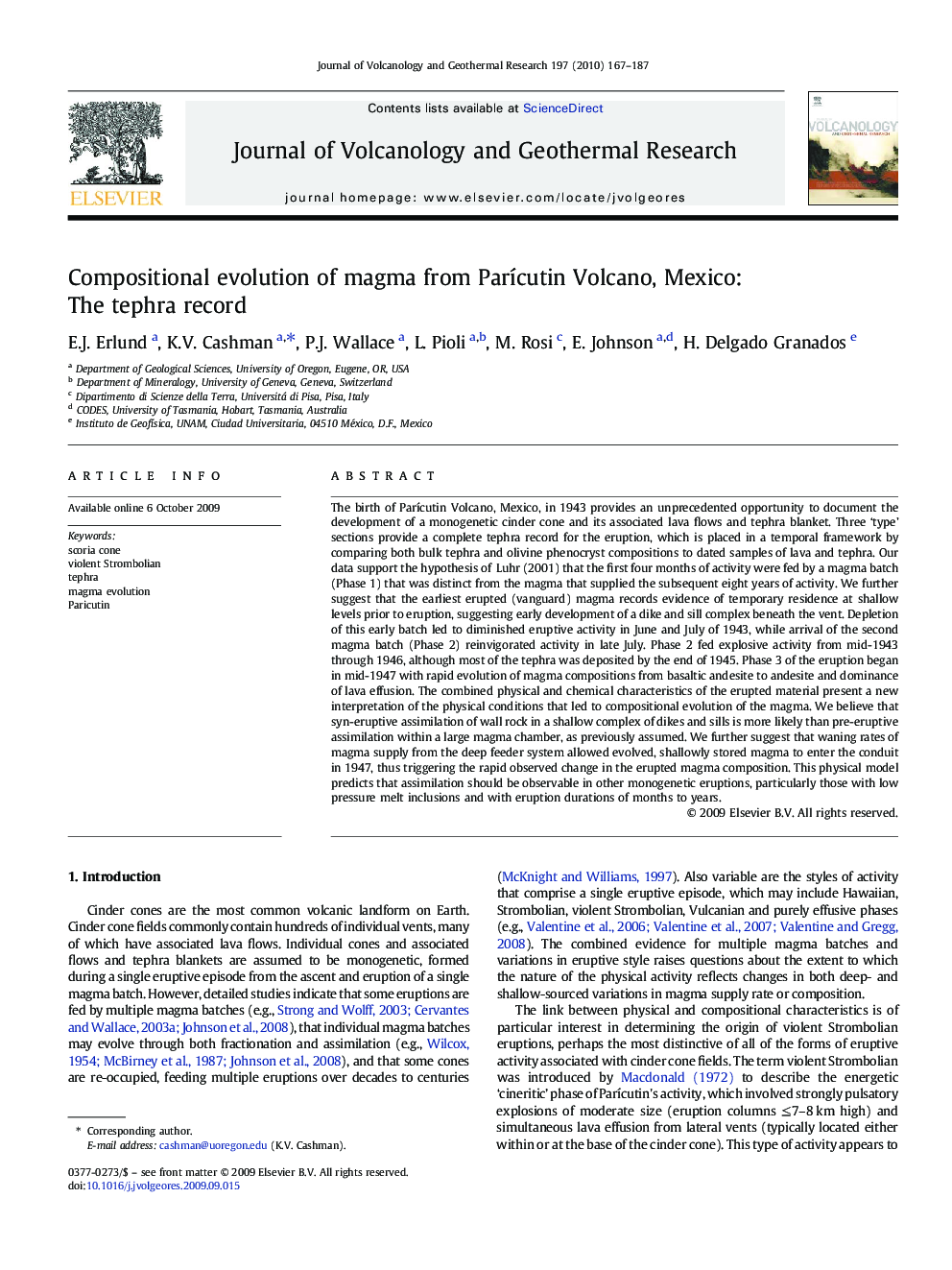| کد مقاله | کد نشریه | سال انتشار | مقاله انگلیسی | نسخه تمام متن |
|---|---|---|---|---|
| 4713765 | 1638413 | 2010 | 21 صفحه PDF | دانلود رایگان |

The birth of Parícutin Volcano, Mexico, in 1943 provides an unprecedented opportunity to document the development of a monogenetic cinder cone and its associated lava flows and tephra blanket. Three ‘type’ sections provide a complete tephra record for the eruption, which is placed in a temporal framework by comparing both bulk tephra and olivine phenocryst compositions to dated samples of lava and tephra. Our data support the hypothesis of Luhr (2001) that the first four months of activity were fed by a magma batch (Phase 1) that was distinct from the magma that supplied the subsequent eight years of activity. We further suggest that the earliest erupted (vanguard) magma records evidence of temporary residence at shallow levels prior to eruption, suggesting early development of a dike and sill complex beneath the vent. Depletion of this early batch led to diminished eruptive activity in June and July of 1943, while arrival of the second magma batch (Phase 2) reinvigorated activity in late July. Phase 2 fed explosive activity from mid-1943 through 1946, although most of the tephra was deposited by the end of 1945. Phase 3 of the eruption began in mid-1947 with rapid evolution of magma compositions from basaltic andesite to andesite and dominance of lava effusion. The combined physical and chemical characteristics of the erupted material present a new interpretation of the physical conditions that led to compositional evolution of the magma. We believe that syn-eruptive assimilation of wall rock in a shallow complex of dikes and sills is more likely than pre-eruptive assimilation within a large magma chamber, as previously assumed. We further suggest that waning rates of magma supply from the deep feeder system allowed evolved, shallowly stored magma to enter the conduit in 1947, thus triggering the rapid observed change in the erupted magma composition. This physical model predicts that assimilation should be observable in other monogenetic eruptions, particularly those with low pressure melt inclusions and with eruption durations of months to years.
Journal: Journal of Volcanology and Geothermal Research - Volume 197, Issues 1–4, 30 November 2010, Pages 167–187